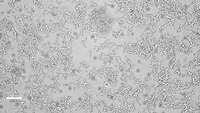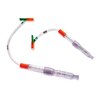SCC611 Sigma-AldrichGRINCH Glucose-Responsive Insulin-secreting C-peptide hProinsulin Rat Insulinoma Cell Line
SCC611, the GRINCH rat insulinoma cell line, is a pancreatic beta cell line transfected with the hPro-CpepSfGFP construct containing the human insulin sequence.
More>> SCC611, the GRINCH rat insulinoma cell line, is a pancreatic beta cell line transfected with the hPro-CpepSfGFP construct containing the human insulin sequence. Less<<Recommended Products
Overview
| Replacement Information |
|---|
| References |
|---|
| Product Information | |
|---|---|
| Components |
|
| Quality Level | MQ100 |
| Biological Information | |
|---|---|
| Host | Rat |
| Cell Line Type |
|
| Physicochemical Information |
|---|
| Dimensions |
|---|
| Materials Information |
|---|
| Toxicological Information |
|---|
| Safety Information according to GHS |
|---|
| Safety Information |
|---|
| Product Usage Statements | |
|---|---|
| Quality Assurance | • Each vial contains ≥ 1 X106 viable cells. • Cells are tested negative for infectious diseases by Essential CLEAR Panel by Charles River Animal Diagnostic Services. • Cells are verified to be of rat origin and negative for interspecies contamination from human, mouse, Chinese hamster, Golden Syrian hamster, and nonhuman primate (NHP) as assessed by a Contamination Clear panel by Charles River Animal Diagnostic Services • Cells are negative for mycoplasma contamination. |
| Usage Statement |
|
| Packaging Information | |
|---|---|
| Material Size | ≥1 X10⁶ cells/vial |
| Transport Information |
|---|
| Supplemental Information |
|---|
| Specifications |
|---|
| Global Trade Item Number | |
|---|---|
| Catalog Number | GTIN |
| SCC611 | 04065271047716 |
Documentation
Data Sheet
| Title |
|---|
| Data Sheet-SCC611 |










